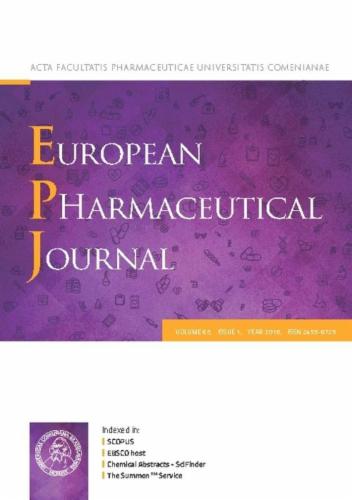人体器官型结肠体外微组织:揭开结肠药物处置的新窗口。
IF 4.3
3区 医学
Q1 PHARMACOLOGY & PHARMACY
引用次数: 0
摘要
本文章由计算机程序翻译,如有差异,请以英文原文为准。

Human organotypic colon in vitro microtissue: unveiling a new window into colonic drug disposition
The purpose of this study was to evaluate EpiColon, a novel human organotypic 3D colon microtissue prototype, developed to assess colonic drug disposition, with a particular focus on permeability ranking, and compare its performance to Caco-2 monolayers.
EpiColon was characterized for barrier function using transepithelial electrical resistance (TEER), morphology via histology and immunohistochemistry, and functionality through drug transport studies measuring apparent permeability (Papp). Cutoff thresholds for the permeability of FITC–dextran 4 kDa (FD4), FITC–dextran 10 kDa (FD10S), and [14C]mannitol were established to monitor microtissue integrity. Permeability of EpiColon for 20 benchmark drugs was compared with Caco-2 data, and the activity of pivotal efflux transporters, including multidrug resistance protein 1/P-glycoprotein (MDR1/P-gp), along with multidrug resistance protein 2 (MRP2) and breast cancer resistance protein (BCRP), was evaluated using selective substrates.
EpiColon exhibited a physiological barrier function (272.0 ± 53.05 Ω x cm2) and effectively discriminated between high (e.g., budesonide and [3H]metoprolol) and low permeable compounds (e.g., [3H]atenolol and [14C]mannitol). The model demonstrated functional activity for key efflux transporters, with efflux ratios of 2.32 for [3H]digoxin (MDR1/P-gp) and 3.34 for sulfasalazine (MRP2 and BCRP). Notably, EpiColon showed an enhanced dynamic range in the low permeability range, differentiating Papp between FD4 and FD10S, in contrast to Caco-2 monolayers. Significant positive correlations were observed between human fraction absorbed (fabs) and logarithmically transformed Papp [AP-BL] values for both EpiColon (rs = 0.68) and Caco-2 (rs = 0.68). Furthermore, EpiColon recapitulates some essential phenotypic and cellular features of the human colon, including the expression of critical marker genes (Pan-Cytokeratin+: epithelial/colonocytes, Vimentin+: mesenchymal/fibroblast, and Alcian Blue+: goblet cell/mucus).
In conclusion, EpiColon is a promising platform that offers a valuable complement to conventional Caco-2 monolayers for studying colonic drug disposition. However, the presence of flat and some cuboidal cells, along with low throughput, must be addressed to improve its applicability in both academic research and pharmaceutical industry.
求助全文
通过发布文献求助,成功后即可免费获取论文全文。
去求助
来源期刊
CiteScore
9.60
自引率
2.20%
发文量
248
审稿时长
50 days
期刊介绍:
The journal publishes research articles, review articles and scientific commentaries on all aspects of the pharmaceutical sciences with emphasis on conceptual novelty and scientific quality. The Editors welcome articles in this multidisciplinary field, with a focus on topics relevant for drug discovery and development.
More specifically, the Journal publishes reports on medicinal chemistry, pharmacology, drug absorption and metabolism, pharmacokinetics and pharmacodynamics, pharmaceutical and biomedical analysis, drug delivery (including gene delivery), drug targeting, pharmaceutical technology, pharmaceutical biotechnology and clinical drug evaluation. The journal will typically not give priority to manuscripts focusing primarily on organic synthesis, natural products, adaptation of analytical approaches, or discussions pertaining to drug policy making.
Scientific commentaries and review articles are generally by invitation only or by consent of the Editors. Proceedings of scientific meetings may be published as special issues or supplements to the Journal.

 求助内容:
求助内容: 应助结果提醒方式:
应助结果提醒方式:


